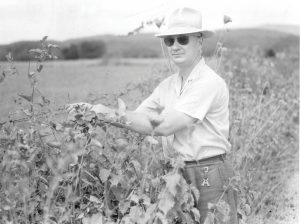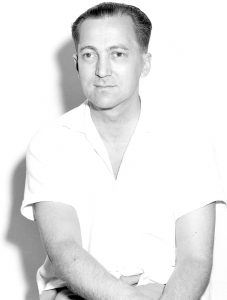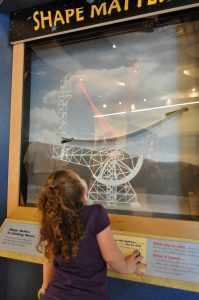On August 14, 1958, construction began on a major radio telescope, the 140-foot (43-meter) dish antenna. Participating in this humble groundbreaking ceremony are left to right: Eugene Hallik (AUI), unidentified (Bliss Company), Jack Gilgallon (Bliss Company), Frank Callender (NRAO), Richard Emberson (AUI).


Grote Reber Rewinds His Beans
Radio astronomy pioneer Grote Reber was a Renaissance thinker, dabbling in many different experiments. Here he is rewinding climbing beans, because he discovered that they produce more massive fruit if they climb opposite to their nature.

Sebastian von Hoerner
From 1962 until 1983, Sebastian von Hoerner was a researcher in Green Bank, West Virginia. Born in Gorlitz, Germany in 1919, von Hoerner studied theoretical physics before coming the NRAO to study star formation and cosmology. He developed mathematical definitions of how large dish telescopes deform under weight and movement, a concept called homology that is still used today. Von Hoerner was friends with Frank Drake during Project Ozma, the first search for extraterrestrial intelligence, and he became a avid SETI supporter. He was a popularizer of astronomy in Germany.

Lloyd Berkner
Lloyd Berkner was President of Associated Universities, Inc. at the time of NRAO’s funding and founding. He had a wildly successful career in telecommunications with the Bureau of Standards and, later, the Carnegie Institute, with such notable achievements as aiding Byrd’s first voyage to the Antarctic. He was the special assistant to the Secretary of State in 1946. In 1951, he became the first full-time President of AUI. At AUI, he rallied NSF for a national radio astronomy observatory and won. He was acting Director of the new NRAO from its 1956 founding until 1959. He also founded the International Geophysical Year to spur international development of satellite technologies which resulted in the 1957 launch of Sputnik I and the 1958 launch of Explorer I.

Joseph Pawsey
Joseph Pawsey was a founding father of radio astronomy. During WWII, he worked on developing advanced radar instrumentation in Australia at its Radiophysics Laboratory. After the War, the discoveries of radio waves coming from the Sun inspired him to turn post-War instrumentation upwards. He and his team used innovative methods for increasing the resolution of these antennas, including using a cliff-based antenna and its reflection in the sea as a two-element interferometer. Pawsey discovered that sunspots are the sources of non-thermal radio waves from the Sun, and he and his team made a catalog of radio stars, which we now know as radio galaxies. He was appointed Director of NRAO in 1962 but died of a brain tumor before he could take the position.

You Make the Shape
The Green Bank Science Center is home to the 25,000-square foot exhibit hall called “Catching the Wave.” Hands-on experiments like this one show visitors the fascinating reasons why our telescopes are so big, how they work, and what it takes to create images of the Universe from invisible waves.





